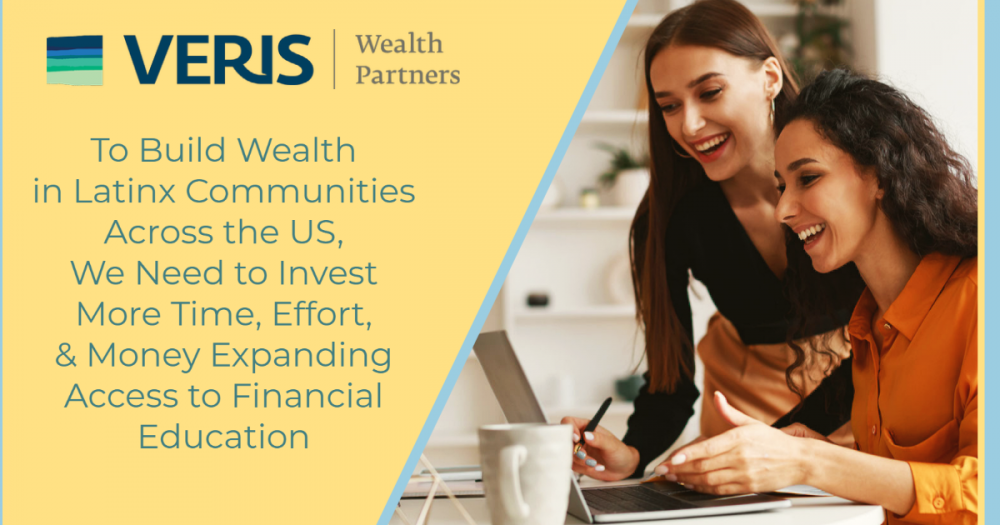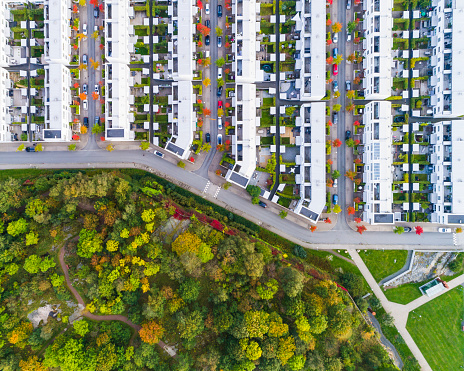To Build Wealth in Latinx Communities Across the US, We Need to Invest More Time, Effort, & Money Expanding Access to Financial Education
By Sandra Guerrero, Advisor
For most of their lives, my mother and father worked in the services sector. Driven by their desire to leave a financial legacy for their children and grandchildren, my parents were motivated to learn new skills to acquire and grow wealth. They saved money, sought out learning opportunities, and ventured into real estate. Motivation plus access to financial education gave them the tools they needed to use their hard-earned money to build wealth.
My parents’ story is one of the reasons I believe that growing access to financial education can help solve persistent economic inequities within Latinx and Hispanic communities across the United States.
Financial skills are not born, they are taught. Without access to experienced peers or educational programs designed to teach how to understand and use financial tools, many Hispanic and Latinx families are less likely to grow wealth. Lack of financial education prevents people from using financial tools that can be used as a springboard to financial success.
I believe expanding access to financial education is one of the most powerful ways we can grow opportunities for financial success within Latinx and Hispanic communities in ways that will positively impact the lives of millions of individuals and families for generations to come.
Economic Challenges and Opportunities for Hispanic Americans
Hispanic Americans have been known to be the largest minority group in the United States since 2003.1 The 2020 Census indicated that 18.9% of Americans identify as Latinx or Hispanic2 and our numbers are growing.3 Despite our growing prominence in communities across the US, the Latinx community is too often left behind in terms of economic opportunity and wealth accumulation in this country.
Research from Urban Institute indicates that the average net worth of white families is approximately five times greater that of Latinx families.4 In terms of income, the average Hispanic or Latinx household earns approximately half the income of the average white household. About 70% of white Americans own their home, whereas for Latinx Americans, the homeownership rate is about 48%.5
In terms of wealth accumulation, Research from Urban Institute indicated that the average net worth of white families was approximately five times greater that of Latino families in 2019.6 Only about 6.5% of all businesses in the United States were Hispanic owned in 2020, with a majority concentrated in the construction, warehousing and transportation, and waste management and remediation sectors.7
Immigrants often come to this country driven by dreams of financial success and building a family legacy. In order to achieve their dreams, more Hispanic and Latinx Americans need more than motivation – they need access to both the training and the opportunities to make their dreams a reality.
Investing money in businesses led by Hispanic and Latinx entrepreneurs and in funds that invest in communities of color is one way to create opportunities for wealth building, but that alone will not be enough to narrow the wealth gap. We must also invest in programs that help people gain access to the education and experience they will need to harness the power of their motivation to succeed and be able to capitalize on expanded opportunities created through investment.
Examples of Programs to Support
If you are committed to the idea of building economic racial equity and growing wealth in Hispanic and Latinx communities across the United States, there are numerous programs you can support that are expanding financial literacy and teaching financial skills. Here are a few:
- UnidosUS, the largest Latino civil rights organization in the US, has made Housing and Financial Empowerment one of their key issues. They offer a range of financial education programs, including workshops, online courses, and one-on-one coaching sessions. Their programs cover topics like budgeting, saving, credit building, and homeownership.
- Hispanic Federation offers financial literacy workshops and counseling services to help Latino families become more financially stable. Their economic empowerment program offers financial literacy and skill building classes taught by bilingual instructors. topics including budgeting, saving, debt management, and retirement planning.
- Operation Hope: This organization offers financial literacy programs to Latino and Hispanic communities. Their programs cover topics like credit and money management, banking, and small business ownership.
These are just a few examples of the programs that are expanding financial literacy and teaching financial skills in Latino and Hispanic communities across America. There are many other organizations and initiatives working towards this goal as well.
Sandra Guerrero is an Advisor in the San Francisco office of Veris Wealth Partners. She is passionate about helping individuals, families, and foundations have a positive social and environmental impact with their wealth. Sandra has more than 20 years of experience in the financial services industry. Full bio.
Sources
1 https://www.nytimes.com/2003/01/22/us/hispanics-now-largest-minority-census-shows.html
2 https://www.census.gov/quickfacts/fact/table/US/PST045221
3 https://www.pewresearch.org/science/2022/06/14/a-brief-statistical-portrait-of-u-s-hispanics/
5 https://fred.stlouisfed.org/series/HOLHORUSQ156N
7 https://www.census.gov/library/stories/2023/01/who-owns-americas-businesses.html
The information contained herein is provided by Veris Wealth Partners for informational purposes only and reflects the opinions of the author’s which are subject to change without notice. Additionally, this document contains information derived from third party sources. Although we believe these third party sources to be reliable, we make no representations as to the accuracy or completeness of any information derived from such third-party sources and take no responsibility therefore.



